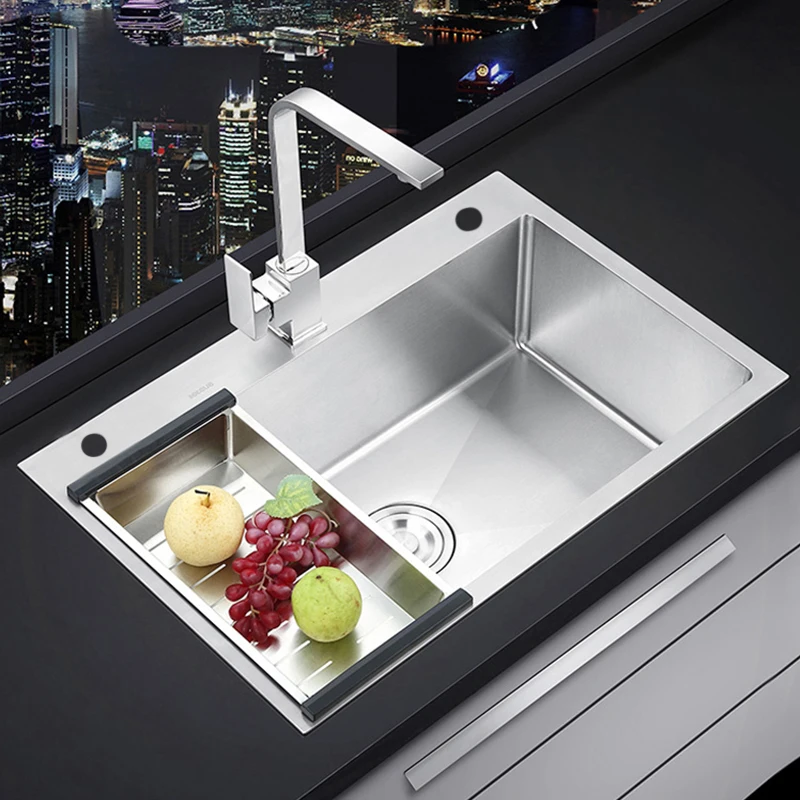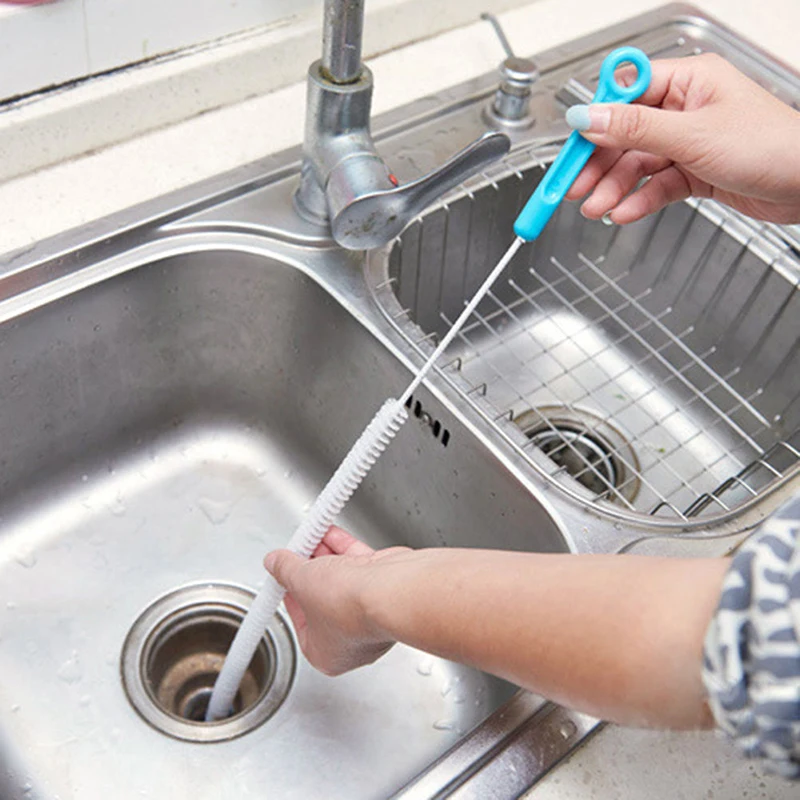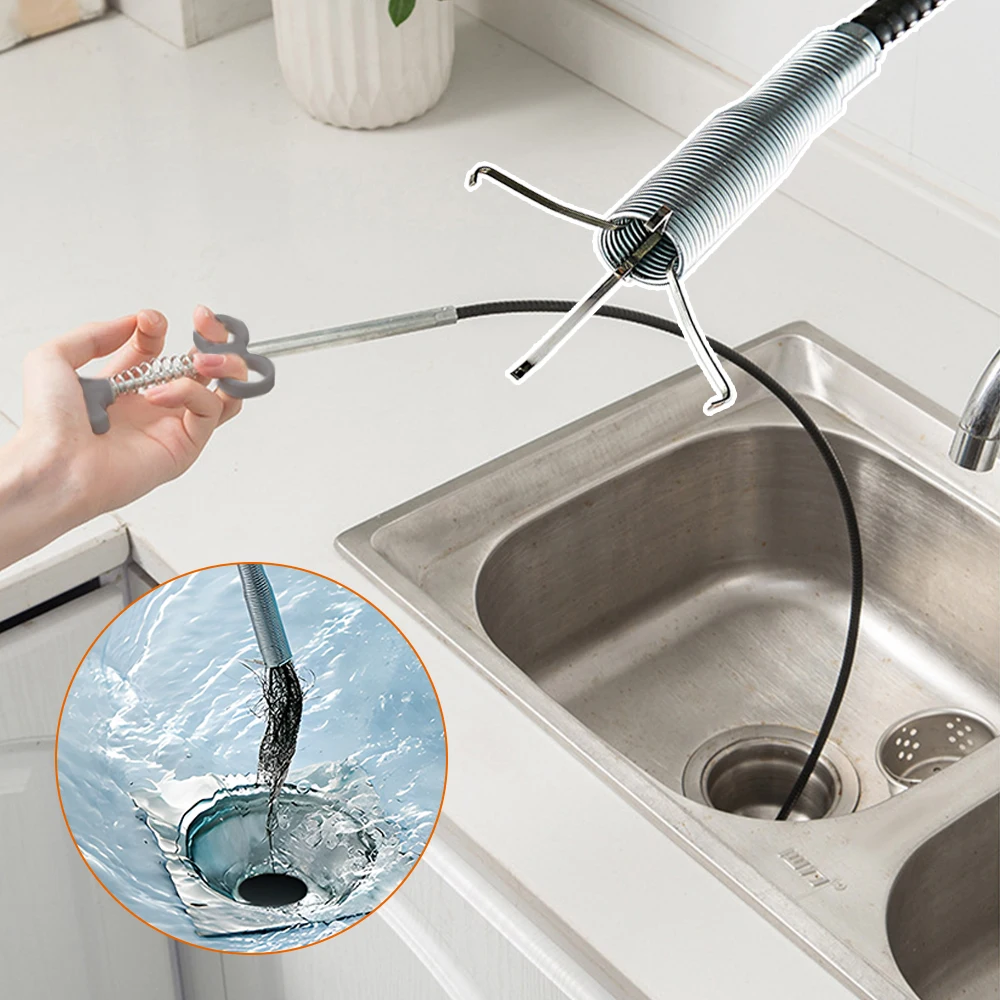Step 1: Clear Out the Sink
Starting with a clear sink is essential for a thorough clean. First, remove any dishes or utensils. Take out the sink stopper and any food catchers. Wipe away any food particles or debris left on the surface. Doing this ensures that your ‘clean sink’ efforts are effective right from the start. This step is the foundation for the rest of the cleaning process, setting you up for success.
 Step 2: Rinse and Apply Cleaning Solution
Step 2: Rinse and Apply Cleaning Solution
After clearing out your sink, give it a quick rinse. Use warm water to loosen any residue. This simple step prepares the surface for the cleaning solution. Make sure to cover the entire sink area, getting into all the corners. Next, choose a cleaning solution suited for your sink type. You can opt for a commercial clean sink product or a mix of baking soda and vinegar for a natural option. Apply the cleaner generously, covering all surfaces. For best results, let the cleaning agent sit for a few minutes. This allows it to break down tough stains and buildup, making it easier to scrub away in the next step. Remember, the right product and application can make all the difference in achieving that sparkling clean sink.
Step 3: Scrubbing the Sink Basin
Now it’s time to get to work: scrubbing the sink basin is up next. Begin by using a soft sponge or brush to avoid scratching your sink’s surface. For a thorough clean, use circular motions to work the cleaner into every part of the basin. Pay special attention to any stains or areas with heavy buildup. You may need to apply extra elbow grease in these spots.
If you encounter stubborn stains, try sprinkling additional baking soda on them. Baking soda is a gentle, yet effective abrasive that can help eradicate tough spots. Let the baking soda sit for a few minutes before you continue scrubbing. For an extra boost, you can also create a paste with vinegar and baking soda. Apply the paste to the hardest-to-clean areas, let it set, and then resume scrubbing.
Scrub around the drain, too, as grime often accumulates here. A toothbrush can be useful for this delicate task. It’s small enough to get into tight spots around the drain and the sink basin. Remember to swap out cleaning tools as needed. If your sponge or brush becomes soiled, replace it with a fresh one to prevent spreading dirt.
Once you have scrubbed every inch of the basin, it’s critical to wash away the cleaning residue. Any leftover cleaner might leave a film or affect the shine of your clean sink.
 Step 4: Cleaning the Faucet and Handles
Step 4: Cleaning the Faucet and Handles
Once the sink basin shines, turn your attention to the faucet and handles. These areas can harbor germs and show water spots. Start by using a gentle cloth or sponge dampened with warm water. Rub the faucet and each handle, removing any grime or soap scum. If water spots persist, consider using a mild vinegar solution to break them down. Apply the solution with a cloth and gently scrub. For tight spaces, use an old toothbrush or a soft-bristled brush. These tools can reach into crevices where dirt tends to accumulate. Rinse the faucet and handles well with clean water. Make sure to remove all cleaning solutions to prevent residue. Lastly, buff dry with a soft towel for a streak-free shine. A clean sink isn’t complete without spotless fixtures that look as good as new. Remember, regular cleaning reduces the buildup of bacteria and keeps your sink looking great.
Step 5: Rinse and Dry
The final step is both simple and essential: wash and dry your sink. After scrubbing, rinse the entire basin with water. Use a stream of warm water to ensure all cleaning agents and residue wash down the drain. Touch every surface as you go. Make sure no cleaner is left behind. Once rinsed, grab a soft, lint-free towel or cloth. Then, dry the sink thoroughly. Pat down every inch, from the basin to the edges. Don’t forget the faucet and handles. Drying prevents water spots and keeps the sink shining. A completely dry sink also discourages bacteria growth and mold. Lastly, replace any items you removed during cleaning. Your clean sink now looks spotless and inviting. It’s ready for your next culinary adventure or washing task.
Tips for Maintaining a Clean Sink
A spotless sink not only adds to the beauty of your kitchen but also ensures hygiene. Here are some tips for maintaining a clean sink:
- Wipe Daily: After each use, quickly wipe your sink. It prevents stain buildup and keeps it shiny.
- Use Mild Cleaners: Stick to mild cleaners to avoid damaging the sink’s surface. Harsh chemicals can cause discoloration.
- Dry After Use: Always dry your sink after washing. This step avoids water marks and stops bacteria from growing.
- Mind the Drains: Clean your drain once a week to prevent clogs and odors. Boiling water or baking soda and vinegar can do the trick.
- Regular Deep Cleaning: Schedule a deep clean for your sink once a month. This maintains a high level of cleanliness.
- Protect the Surface: Consider using sink protectors. They limit scratches and damage from pots and pans.
- Avoid Harsh Scrubbers: Use soft sponges or cloths to prevent scratches. Soft cleaners maintain the sink’s shine for longer.
- Immediate Stain Removal: Tackle stains as soon as they appear. The longer they sit, the harder they are to remove.
- Lemon for Freshness: Rub a slice of lemon around the sink. This natural method leaves a fresh scent and brightens the sink.
- Educate Your Family: Teach household members proper sink usage and cleaning. Everyone’s efforts will keep the sink in top condition.
By following these tips, you can keep your clean sink gleaming and germ-free for a long time.
 Best Cleaning Products for Different Sink Types
Best Cleaning Products for Different Sink Types
Choosing the right cleaning products for your sink type is key to maintaining its look and longevity. Here are the best products for different types of sinks:
- Stainless Steel Sinks: For a clean sink that’s stainless steel, use a gentle cleaner like a mild dishwashing soap or a commercial stainless steel cleaner. Avoid using bleach or abrasive cleaners, as these can damage the finish.
- Porcelain Sinks: Use a non-abrasive cleaner, like a cream-based cleanser or baking soda. These cleaners remove stains without scratching the surface.
- Copper Sinks: Go for a specialized copper cleaner or use a mixture of lemon juice and salt for a natural option. Always rinse well after cleaning.
- Acrylic Sinks: Acrylic-friendly cleaners are a must. Avoid abrasives. A simple mixture of water and dishwashing liquid works well.
- Granite or Composite Sinks: Use a cleaner made specifically for granite or gentle dish soap. Don’t use vinegar, as it can etch the surface.
- Ceramic Sinks: Ceramic is durable, but still avoid harsh chemicals. A mild bathroom cleaner or baking soda should do the job.
Remember, no matter the sink type, always test your chosen cleaner on a small hidden area first to ensure it won’t cause damage. Also, read the manufacturer’s instructions for care and maintenance. With the appropriate product and regular cleaning habits, your sink will stay spotlessly clean and in excellent condition.
Eco-Friendly Practices
Adopting eco-friendly practices not only helps the environment but also promotes a healthier kitchen. Here are some sustainable methods to maintain a clean sink:
Use Biodegradable Cleaners
Choose biodegradable cleaning products that break down naturally without harming the environment. Brands like Ecover and Method offer eco-friendly cleaners that are effective and safe for your sink and the planet.
Reduce Chemical Use
Minimize the use of harsh chemicals by opting for natural alternatives like vinegar and baking soda. These ingredients are non-toxic, safe for the environment, and highly effective at cleaning sinks.
Reuse and Recycle
Reuse cleaning tools such as sponges and brushes instead of disposable options. Additionally, recycle empty cleaning product bottles to reduce waste and promote sustainability in your household.
Conserve Water
Be mindful of water usage while cleaning your sink. Turn off the faucet when scrubbing and use a bowl to rinse away cleaning agents instead of letting the water run continuously. This practice conserves water and reduces your environmental footprint.
Compost Grease and Food Scraps
Instead of disposing of grease and food scraps down the sink, compost them or dispose of them in designated waste containers. This helps prevent clogs and reduces the impact on your plumbing and the environment.
Innovative Solutions for Maintaining a Clean Sink
Incorporate these innovative solutions to enhance your sink’s cleanliness and functionality:
Sink Organizers
Use sink organizers or caddies to keep cleaning supplies neatly arranged and easily accessible. Organizers prevent clutter and make the cleaning process more efficient, ensuring all necessary tools are within reach.
Built-In Soap Dispenser
Install a built-in soap dispenser near your sink to provide easy access to
cleaner solutions without cluttering the countertop. This addition streamlines your cleaning routine, making it more convenient and efficient.
Garbage Disposal Maintenance
Regularly maintain your garbage disposal to prevent clogs and odors. Grinding up ice cubes and citrus peels can help clean the blades and eliminate bad smells, ensuring your sink remains fresh and functional.
Touchless Faucets
Consider installing touchless faucets for a more hygienic and convenient sink experience. These faucets reduce the spread of germs and make it easier to control water flow, enhancing both cleanliness and functionality.
UV Sink Sanitizers
Invest in a UV sink sanitizer to eliminate bacteria and germs effectively. These devices use ultraviolet light to disinfect the sink’s surface, providing an extra layer of cleanliness without the need for harsh chemicals.
Quick-Flush Devices
Use quick-flush devices like silicone sink mats or splash guards to prevent water and debris from splashing out of the sink. These tools help maintain a tidy workspace and reduce the amount of cleaning required after each use.
 Common Mistakes to Avoid When Cleaning Your Sink
Common Mistakes to Avoid When Cleaning Your Sink
To ensure your sink stays clean and well-maintained, avoid these common mistakes:
Using Harsh, Abrasive Cleaners
Harsh cleaners and abrasive tools can scratch and damage your sink’s surface over time. Instead, choose gentle, non-abrasive cleaning products and use soft sponges or cloths to clean your sink.
Ignoring Regular Maintenance
Neglecting regular maintenance can lead to stubborn stains, clogs, and unpleasant odors. Make cleaning your sink a consistent part of your routine to prevent buildup and ensure lasting cleanliness.
Overusing Bleach
While bleach is effective for disinfecting, overusing it can weaken your sink’s material and harm your health. Use bleach sparingly and opt for milder disinfectants when possible to maintain both the sink and your wellbeing.
Not Addressing Mold and Mildew
Ignoring mold and mildew can compromise the cleanliness and safety of your kitchen. Promptly clean any signs of mold or mildew using appropriate cleaners to prevent their spread and maintain a hygienic sink area.
Improper Storage of Cleaning Supplies
Storing cleaning supplies in your sink area can lead to spills, stains, and improper organization. Keep your cleaning products in a dedicated storage area, ensuring they are easily accessible without cluttering the sink.
Frequently Asked Questions
How Often Should I Clean My Sink?
To maintain a clean sink, it’s recommended to clean it daily with a quick rinse and wipe-down. For a more thorough cleaning, perform a deep clean once a week to remove any buildup and disinfect the sink.
What Are the Best Natural Cleaners for a Clean Sink?
Natural cleaners like baking soda, vinegar, and lemon juice are excellent for maintaining a clean sink. They effectively remove stains, deodorize, and disinfect without the use of harsh chemicals, making them safe for both your sink and the environment.
Can I Use Baking Soda and Vinegar Together on My Sink?
Yes, combining baking soda and vinegar creates a powerful cleaning solution. The fizzing reaction helps loosen grime and stains, making it easier to scrub away dirt. This natural method is effective for deep cleaning and deodorizing your sink.
How Can I Prevent My Sink from Getting Clogged?
To prevent clogs in your sink, avoid disposing of grease, coffee grounds, and large food particles down the drain. Use a drain strainer to catch debris and regularly clean the drain with baking soda and vinegar to maintain clear pipes.
What Should I Do If My Sink Stains Won’t Come Off?
For stubborn stains, use a specialized sink cleaner like Bar Keepers Friend or a paste made from baking soda and water. Let the cleaner sit on the stain for a few minutes before scrubbing gently with a soft brush or sponge.
Are There Eco-Friendly Sink Cleaning Products?
Yes, several eco-friendly cleaning products are available, such as Seventh Generation Cleaners, Method Cleaners, and Ecover Cleaners. These products use natural ingredients and sustainable packaging, making them environmentally responsible choices for maintaining a clean sink.
 Final Thoughts
Final Thoughts
In conclusion, achieving a clean sink is an integral part of maintaining a healthy and aesthetically pleasing kitchen. By incorporating effective cleaning methods, using the right products, and following maintenance tips, you can ensure that your sink remains spotless and functional. A clean sink not only enhances the overall cleanliness of your kitchen but also contributes to a healthier and more enjoyable cooking environment.
Remember, consistency is key. Regular cleaning and mindful maintenance practices will keep your sink looking its best, preventing the buildup of grime and the growth of harmful bacteria. Whether you prefer natural cleaning solutions or specialized products, there are numerous options available to suit your preferences and needs. Embrace these strategies, and transform your sink into a shining example of cleanliness and efficiency in your kitchen.

